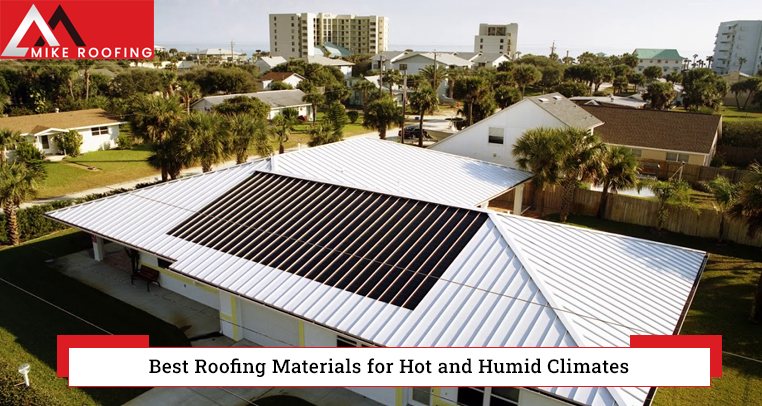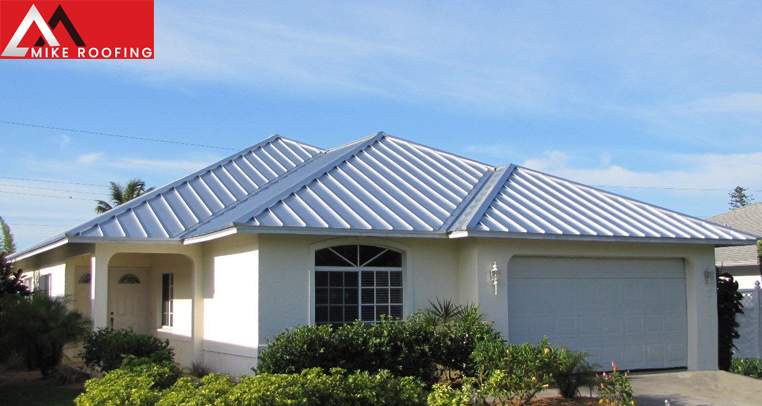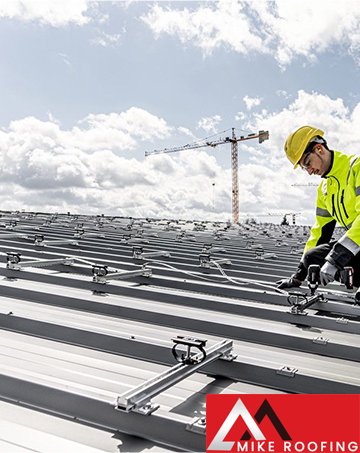Best Roofing Materials for Hot and Humid Climates
Roofs keep our houses safe from sun and rain. In hot and humid places, choosing the right roof is super important. The sun beats down, and the air is full of moisture. This makes some roofs wear out faster than others. A good roof keeps our homes cool and dry. It also lasts a long time. This writing talks about six great roofing materials for hot and humid weather. These materials are strong and help us stay comfortable. They protect our homes from tough weather. So, let’s explore these excellent roofing options.
1. Asphalt Shingles
Asphalt shingles are very common. Many houses have them. They are made from fiberglass or paper coated with asphalt. This makes them waterproof. They come in different colors and styles. Also, they are quite affordable. For hot and humid areas, look for shingles with special granules. These granules reflect sunlight. This helps keep the house cooler. Furthermore, asphalt shingles are easy to install. This makes them a popular choice for many homeowners.
These shingles are good at shedding water. This is important in humid places. Because of this, they prevent leaks. Additionally, they can handle some strong winds. However, they might not last as long as other materials in very extreme weather. For example, very strong heat can sometimes damage them. Nevertheless, they are a good option for many people.
| Feature | Description |
| Material | Fiberglass or paper coated with asphalt |
| Weather | Good for shedding water |
| Installation | Easy |
| Heat Reflection | Look for special granules for better reflection |
2. Metal Roofing
Metal roofs are strong and long-lasting. They can be made from steel, aluminum, or copper. Metal reflects a lot of sunlight. This keeps houses cooler. In addition, metal roofs are resistant to fire and insects. This makes them a safe choice. Besides this, they can withstand heavy rain and wind. So, they are great for humid areas with storms.
Metal roofs come in different styles. You can get them in sheets or shingles. Moreover, they are lightweight. This is good for the structure of the house. Also, they need very little maintenance. You usually do not have to do much to them. Thus, they are a great long-term investment.
| Feature | Description |
| Material | Steel, aluminum, or copper |
| Heat | Reflects sunlight, keeping house cooler |
| Durability | Fire and insect resistant |
| Maintenance | Low |
3. Clay and Concrete Tiles
Clay and concrete tiles are very durable. They can last for many years. They are made from natural materials. These tiles are great at resisting heat. They also do not rot or get damaged by insects. In hot and humid weather, these qualities are very important. Because of their thickness, they keep the inside of the house cooler.
These tiles come in many shapes and colors. This makes them a nice choice for different house styles. Furthermore, they are very strong against wind and rain. However, they are heavier than other materials. So, the house structure needs to be strong enough to support them. Also, they can be more expensive to install.
| Feature | Description |
| Material | Clay or concrete |
| Durability | Very long-lasting, resistant to heat and insects |
| Style | Many shapes and colors |
| Weight | Heavier than other materials |
4. Slate Roofing
Slate is a natural stone. It makes a very beautiful and long-lasting roof. Slate roofs can last for over a hundred years. They are very strong against weather. They resist wind, rain, and snow very well. In addition, they do not burn. This makes them a very safe option.
Slate roofs are very elegant. They give a house a classic look. However, they are one of the most expensive roofing materials. Also, they are heavy. So, the house structure needs to be strong. Furthermore, installing a slate roof needs special skills. Therefore, it is important to hire experienced installers.
| Feature | Description |
| Material | Natural stone |
| Durability | Extremely long-lasting, weather resistant |
| Appearance | Elegant |
| Cost | Very expensive |
5. Green Roofs
Green roofs are covered with plants. They are a very eco-friendly option. Plants help keep the building cooler. They also help clean the air. In hot and humid climates, green roofs can be very helpful. They reduce the heat that enters the building. Consequently, they make the inside more comfortable.
Green roofs also help manage rainwater. They absorb some of the water. This reduces runoff. Moreover, they provide habitat for birds and insects. However, green roofs need special construction. They also need regular maintenance, such as watering and weeding.
| Feature | Description |
| Material | Plants and a waterproof membrane |
| Cooling | Plants help keep the building cooler |
| Environment | Eco-friendly, helps clean the air |
| Maintenance | Regular watering and weeding needed |

6. Built-Up Roofing (BUR)
Built-up roofing is made of layers of asphalt and reinforcing fabrics. It is a very durable and waterproof option. It is commonly used on flat roofs. This type of roof is good at handling heavy rain. Thus, it is a good choice for humid areas.
BUR is also fire-resistant. This adds to its safety. However, installing BUR can be a complex process. It requires skilled installers. Also, it can be more expensive than some other options. Nevertheless, it provides excellent protection.
| Feature | Description |
| Material | Layers of asphalt and reinforcing fabrics |
| Durability | Very durable and waterproof |
| Use | Commonly used on flat roofs |
| Installation | Requires skilled installers |


